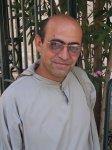
The Prefect and Secretary of Congregation for Divine Worship have prepared a decree, Paternas vices (Prot. N. 215/11/L), indicating that in praying Eucharistic prayers II-IV, the priest is to insert the name of Saint Joseph. The decree states: “henceforth” and “… by virtue of the faculties granted by the Supreme Pontiff FRANCIS, is pleased to decree that the name of Saint Joseph, Spouse of the Blessed Virgin Mary is henceforth to be added to Eucharistic Prayers II, III, IV….”
Blessed John XXIII added the name of Saint Joseph to the Roman Canon in 1962.
At this point, no effective date has been determined for usage (See CIC 8). However, the cover letter from the USCCB General Secretary mentions that it is to be done “as soon as possible.” There is, however, a significant question as to when the priest can legitimately make the change in the Eucharistic Prayer.
The Latin:
II: “ut cum beáta Dei Genetríce Vírgine María, beáto Ioseph, eius Sponso, beátis Apóstolis”
III: “cum beatissíma Vírgine, Dei Genetríce, María, cum beáto Ioseph, eius Sponso, cum beátis Apóstolis”
IV: “cum beáta Vírgine, Dei Genetríce, María, cum beáto Ioseph, eius Sponso, cum Apóstolis”
The English:
II: that with the Blessed Virgin Mary, Mother of God, with Blessed Joseph, her Spouse, with the blessed Apostles
III: with the most Blessed Virgin Mary, Mother of God, with blessed Joseph, her Spouse, with your blessed Apostles and glorious Martyrs
IV: with the Blessed Virgin Mary, Mother of God with blessed Joseph, her Spouse, and with your Apostles
The Spanish:
II: con María, la Virgen Madre de Dios, su esposo san José, los apóstoles y…
III: con María, la Virgen Madre de Dios, su esposo san José, los apóstoles y los mártires…
IV: con María, la Vigen Madre de Dios, con su esposo san José, con los apóstoles y los santos…
Ite ad Ioseph










